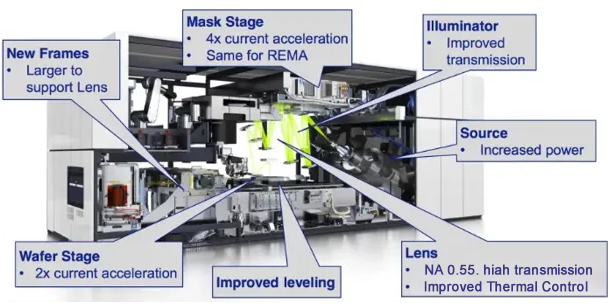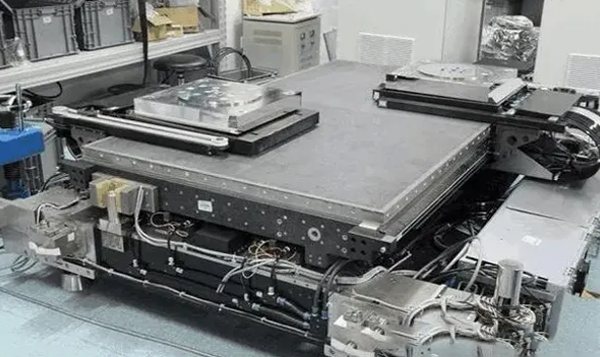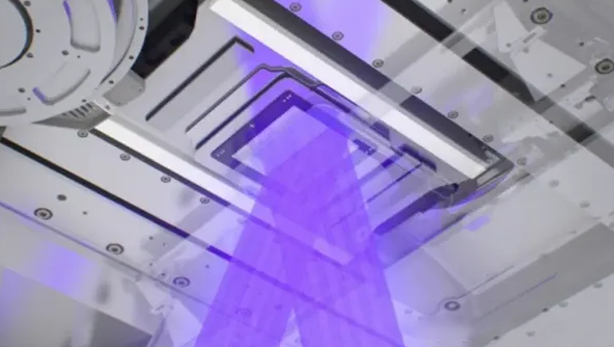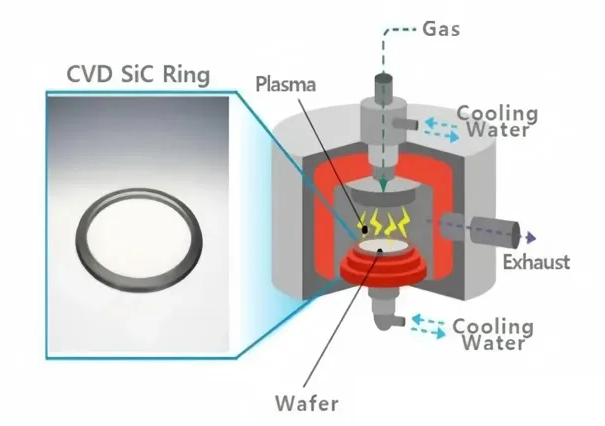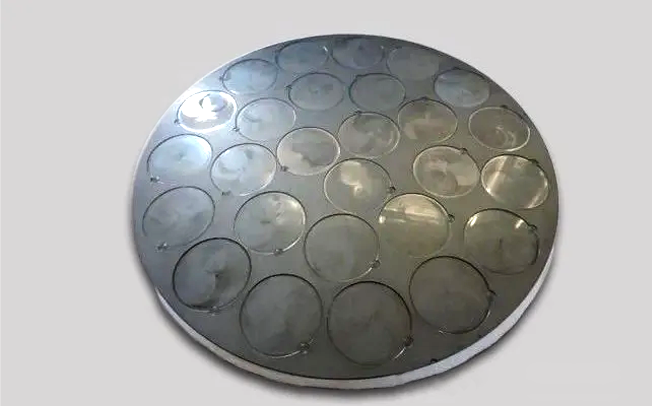Photolithography technology mainly focuses on using optical systems to expose circuit patterns on silicon wafers. The accuracy of this process directly affects the performance and yield of integrated circuits. As one of the top equipment for chip manufacturing, the lithography machine contains up to hundreds of thousands of components. Both the optical components and components within the lithography system require extremely high precision to ensure circuit performance and accuracy. SiC ceramics have been used in wafer chucks and ceramic square mirrors.
Wafer chuck The wafer chuck in the lithography machine bears and moves the wafer during the exposure process. Precise alignment between the wafer and the chuck is essential for accurately replicating the pattern on the surface of the wafer. SiC wafer chucks are known for their lightweight, high dimensional stability and low thermal expansion coefficient, which can reduce inertial loads and improve motion efficiency, positioning accuracy and stability.
Ceramic square mirror In the lithography machine, the motion synchronization between the wafer chuck and the mask stage is crucial, which directly affects the lithography accuracy and yield. The square reflector is a key component of the wafer chuck scanning positioning feedback measurement system, and its material requirements are lightweight and strict. Although silicon carbide ceramics have ideal lightweight properties, manufacturing such components is challenging. Currently, leading international integrated circuit equipment manufacturers mainly use materials such as fused silica and cordierite. However, with the advancement of technology, Chinese experts have achieved the manufacture of large-size, complex-shaped, highly lightweight, fully enclosed silicon carbide ceramic square mirrors and other functional optical components for photolithography machines. The photomask, also known as the aperture, transmits light through the mask to form a pattern on the photosensitive material. However, when EUV light irradiates the mask, it emits heat, raising the temperature to 600 to 1000 degrees Celsius, which may cause thermal damage. Therefore, a layer of SiC film is usually deposited on the photomask. Many foreign companies, such as ASML, now offer films with a transmittance of more than 90% to reduce cleaning and inspection during the use of the photomask and improve the efficiency and product yield of EUV photolithography machines.
Plasma Etching and Deposition Photomasks, also known as crosshairs, have the main function of transmitting light through the mask and forming a pattern on the photosensitive material. However, when EUV (extreme ultraviolet) light irradiates the photomask, it emits heat, raising the temperature to between 600 and 1000 degrees Celsius, which may cause thermal damage. Therefore, a layer of silicon carbide (SiC) film is usually deposited on the photomask to alleviate this problem. At present, many foreign companies, such as ASML, have begun to provide films with a transparency of more than 90% to reduce the need for cleaning and inspection during the use of the photomask, thereby improving the efficiency and product yield of EUV lithography machines. Plasma Etching and Deposition Focus Ring and others In semiconductor manufacturing, the etching process uses liquid or gas etchants (such as fluorine-containing gases) ionized into plasma to bombard the wafer and selectively remove unwanted materials until the desired circuit pattern remains on the wafer surface. In contrast, thin film deposition is similar to the reverse side of etching, using a deposition method to stack insulating materials between metal layers to form a thin film. Since both processes use plasma technology, they are prone to corrosive effects on chambers and components. Therefore, the components inside the equipment are required to have good plasma resistance, low reactivity to fluorine etching gases, and low conductivity. Traditional etching and deposition equipment components, such as focus rings, are usually made of materials such as silicon or quartz. However, with the advancement of integrated circuit miniaturization, the demand and importance of etching processes in integrated circuit manufacturing are increasing. At the microscopic level, precise silicon wafer etching requires high-energy plasma to achieve smaller line widths and more complex device structures. Therefore, chemical vapor deposition (CVD) silicon carbide (SiC) has gradually become the preferred coating material for etching and deposition equipment with its excellent physical and chemical properties, high purity and uniformity. At present, CVD silicon carbide components in etching equipment include focus rings, gas shower heads, trays and edge rings. In deposition equipment, there are chamber covers, chamber liners and SIC-coated graphite substrates.
Due to its low reactivity and conductivity to chlorine and fluorine etching gases, CVD silicon carbide has become an ideal material for components such as focus rings in plasma etching equipment. CVD silicon carbide components in etching equipment include focus rings, gas shower heads, trays, edge rings, etc. Take the focus rings as an example, they are key components placed outside the wafer and in direct contact with the wafer. By applying voltage to the ring, the plasma is focused through the ring onto the wafer, improving the uniformity of the process. Traditionally, focus rings are made of silicon or quartz. However, as integrated circuit miniaturization advances, the demand and importance of etching processes in integrated circuit manufacturing continues to increase. Plasma etching power and energy requirements continue to rise, especially in capacitively coupled plasma (CCP) etching equipment, which requires higher plasma energy. As a result, the use of focus rings made of silicon carbide materials is increasing.
Post time: Oct-29-2024

